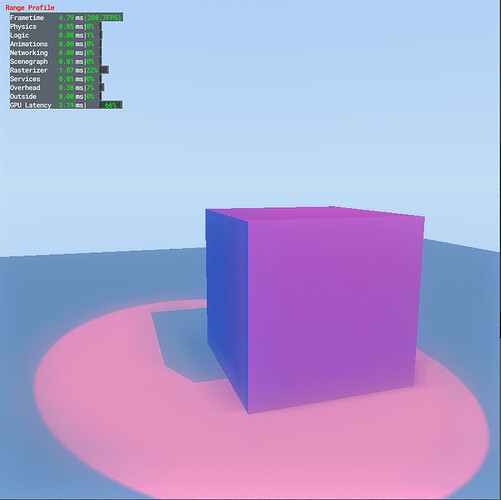Hi, I found this filter , it seems to work with Range Engine . So it’s about simulating indirect lighting (light bouncing on objects) . Even though it makes the render less “sharp” , like some other 2d filters it can turns your render in some soup and eat your CPU. You can see in the code the letters “AO” so it seems it deals with AO . I have no idea what this stuff doing really. Maybe it’s a mix of some HDR blur and AO
Would like that some Opengl experts could do once an optimized (no redundancies) all-in-one 2d filter
FFXA , SSAO , Sharp-Blur-DOF , Bloom, Colors&Contrast.
uniform sampler2D bgl_DepthTexture; // Depth texture
uniform sampler2D bgl_RenderedTexture; // Color texture
uniform float bgl_RenderedTextureWidth;
uniform float bgl_RenderedTextureHeight;
float samples = 32.0;
float radius = 0.25;
float brightness = 0.8;
uniform vec2 camerarange = vec2(0.1, 100.0);
float pw = radius/(bgl_RenderedTextureWidth);
float ph = radius/(bgl_RenderedTextureHeight);
float rand(in vec2 coord) //generating random noise
{
float noiseX = clamp(fract(sin(dot(coord ,vec2(12.9898,78.233))) * 43758.5453),0.0,1.0)*0.2+0.5;
//float noiseX = ((fract(1.0-coord.s*(bgl_RenderedTextureWidth/2.0))*0.25)+(fract(coord.t*(bgl_RenderedTextureHeight/2.0))*0.9));
return noiseX;
}
float readDepth(in vec2 coord)
{
if (coord.x<0.0||coord.y<0.0) return 1.0;
float nearZ = camerarange.x;
float farZ =camerarange.y;
float posZ = texture2D(bgl_DepthTexture, coord).x;
return (2.0 * nearZ) / (nearZ + farZ - posZ * (farZ - nearZ));
}
vec3 readColor(in vec2 coord)
{
return texture2D(bgl_RenderedTexture, coord).xyz;
}
float compareDepths(in float depth1, in float depth2)
{
float gauss = 0.0;
float diff = (depth1 - depth2)*100.0; //depth difference (0-100)
float gdisplace = 0.2; //gauss bell center
float garea = 3.0; //gauss bell width
//reduce left bell width to avoid self-shadowing
if (diff<gdisplace) garea = 0.2;
gauss = pow(2.7182,-2.0*(diff-gdisplace)*(diff-gdisplace)/(garea*garea));
return max(0.2,gauss);
}
vec3 calAO(float depth,float dw, float dh, inout float ao)
{
float temp = 0.0;
vec3 bleed = vec3(0.0,0.0,0.0);
float coordw = gl_TexCoord[0].x + dw/depth;
float coordh = gl_TexCoord[0].y + dh/depth;
if (coordw < 1.0 && coordw > 0.0 && coordh < 1.0 && coordh > 0.0){
vec2 coord = vec2(coordw , coordh);
temp = compareDepths(depth, readDepth(coord));
bleed = readColor(coord);
}
ao += temp;
return temp*bleed;
}
void main(void)
{
//randomization texture:
float random = rand(gl_TexCoord[0].st);
//random = random*2.0-(1.0);
//initialize stuff:
float depth = readDepth(gl_TexCoord[0].st);
vec3 gi = vec3(0.0,0.0,0.0);
float ao = 0.0;
float dx0 = pw;
float dy0 = ph;
float ang = 0.0;
for (int i = 0; i < int(samples); ++i)
{
float dzx = float(dx0 * random);
float dzy = float(dx0 * random);
float a = radians(ang);
float dx = cos(a)*dzx-sin(a)*dzy;
float dy = sin(a)*dzx+cos(a)*dzy;
gi += calAO(depth, dx, dy, ao);
dx0 += pw;
dy0 += ph;
ang+=360.0/6.0;
}
//final values, some adjusting:
vec3 lumcoeff = vec3(0.299,0.587,0.114);
vec3 color = vec3(readColor(gl_TexCoord[0].st));
float lum = dot(color, lumcoeff);
vec3 luminance = vec3(lum, lum, lum);
vec3 white = vec3(1.0,1.0,1.0);
vec3 black = vec3(0.0,0.0,0.0);
vec3 treshold = vec3(0.9,0.9,0.9);
vec3 finalAO = vec3(1.0-(ao/samples));
vec3 finalGI = (gi/samples);
vec3 mask = clamp(max(black,luminance-treshold)+max(black,luminance-treshold)+max(black,luminance-treshold),0.0,1.0);
//gl_FragColor = vec4(color*mix(finalAO/3*2+7*finalGI,white,mask),1.0);
//gl_FragColor = vec4(mix(finalAO+finalGI,white,mask),1.0);
gl_FragColor = vec4(color*finalAO+finalGI*brightness,1.0);
}
